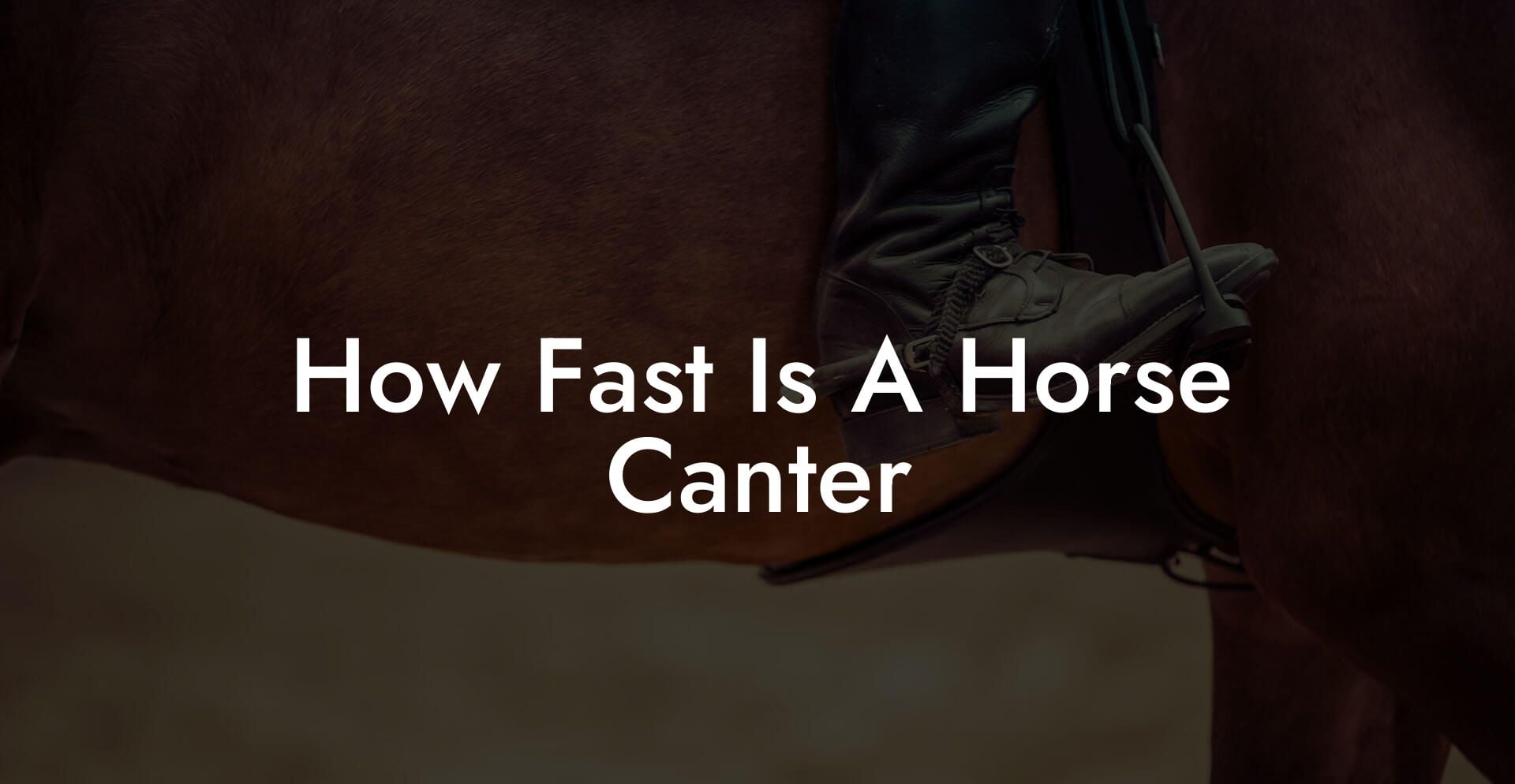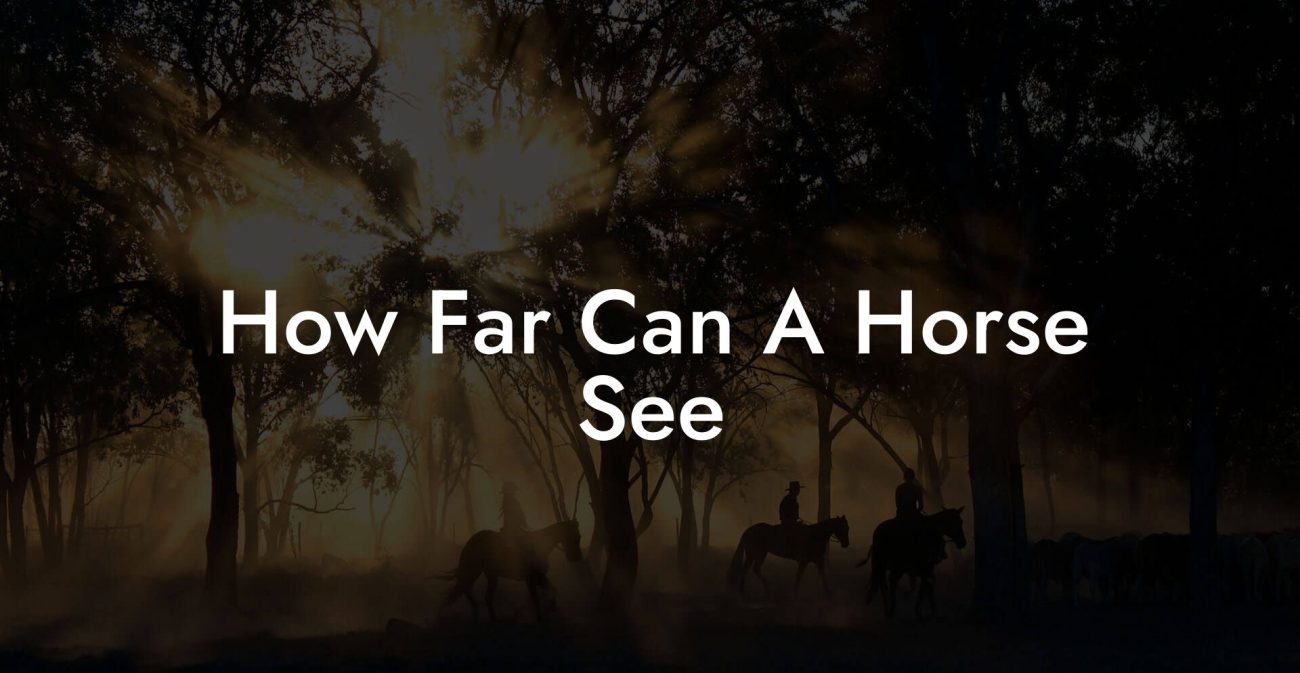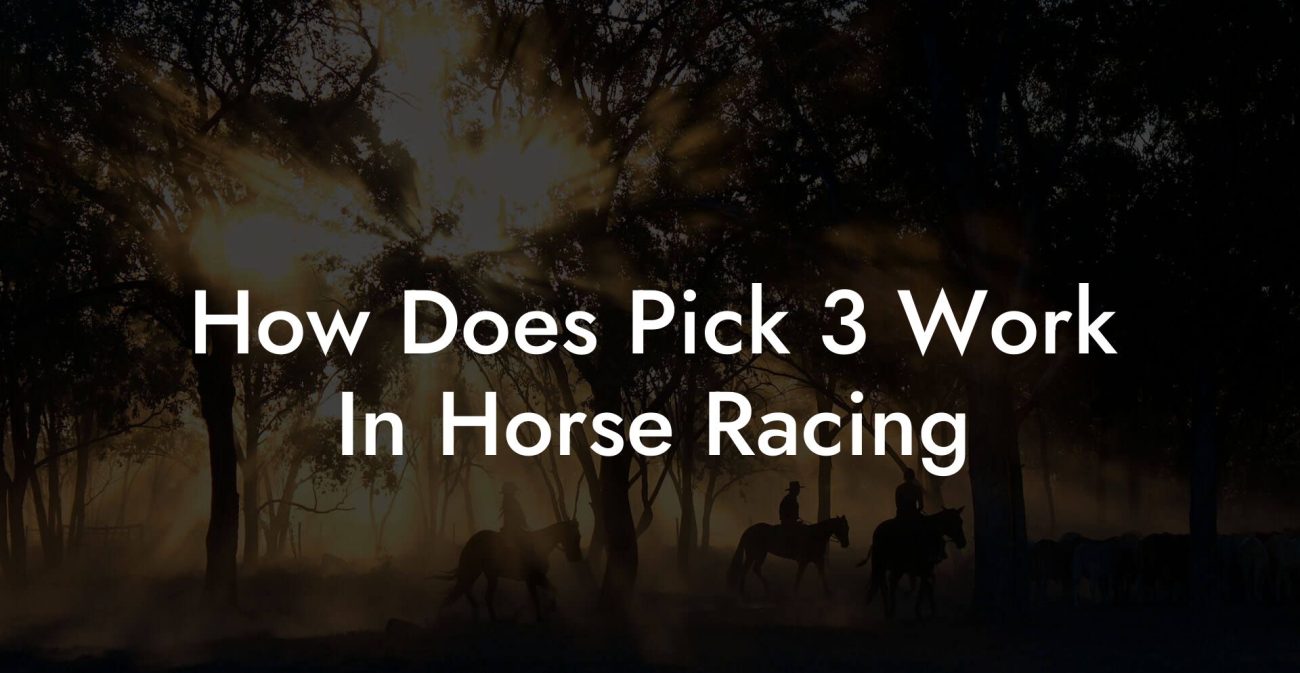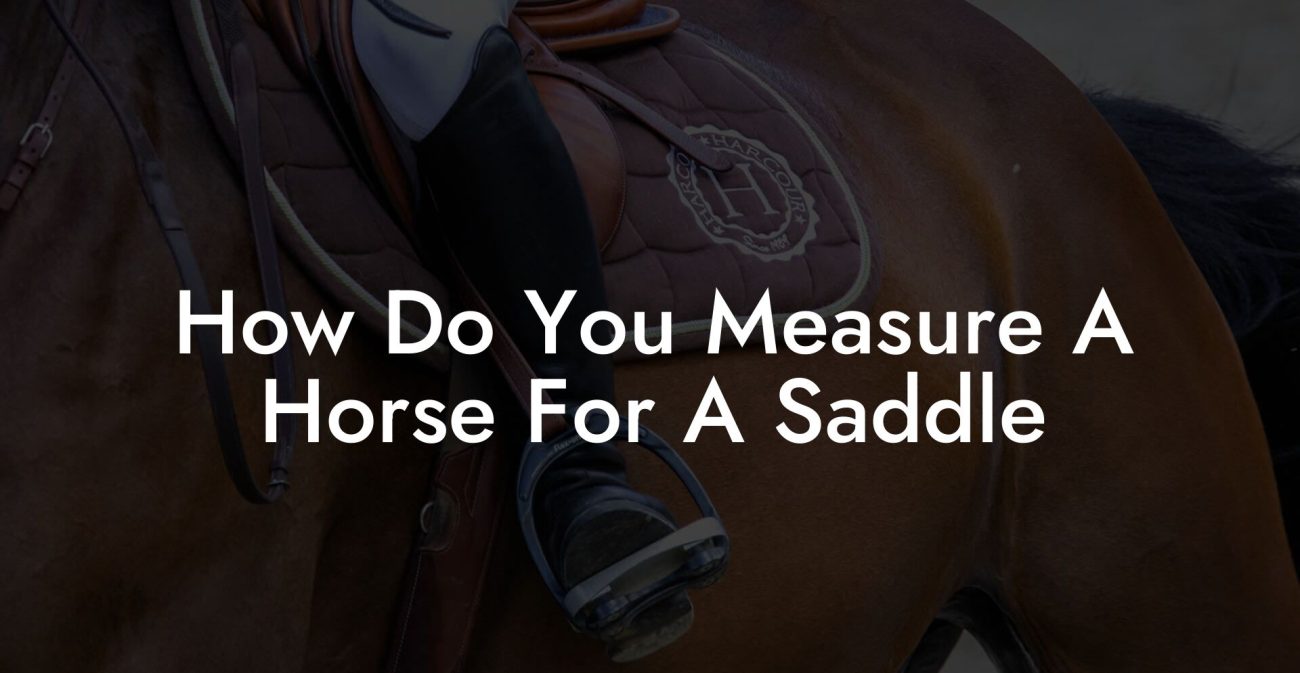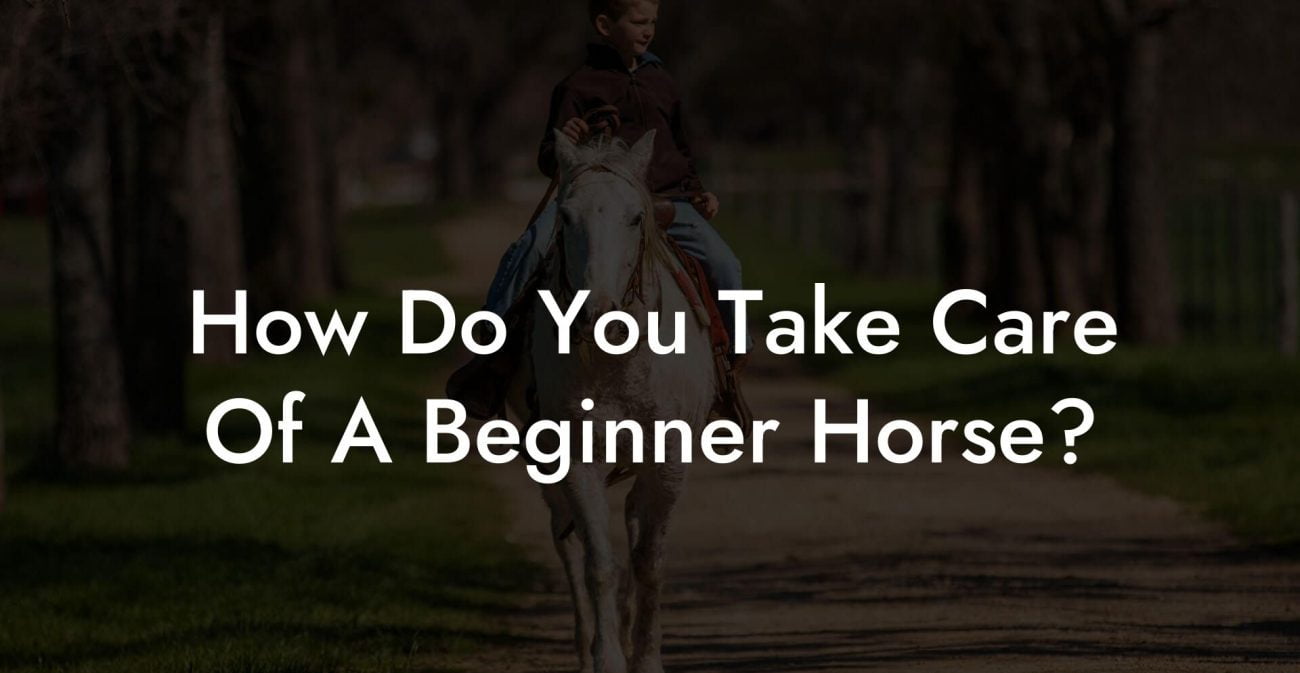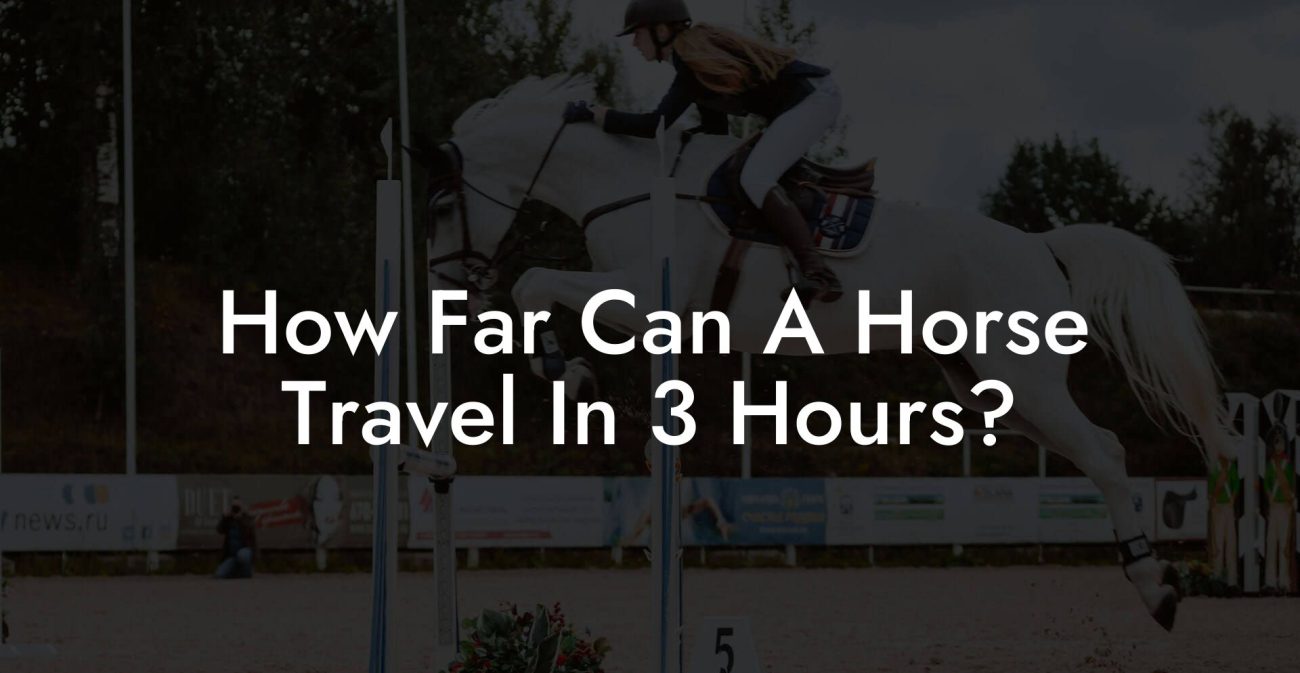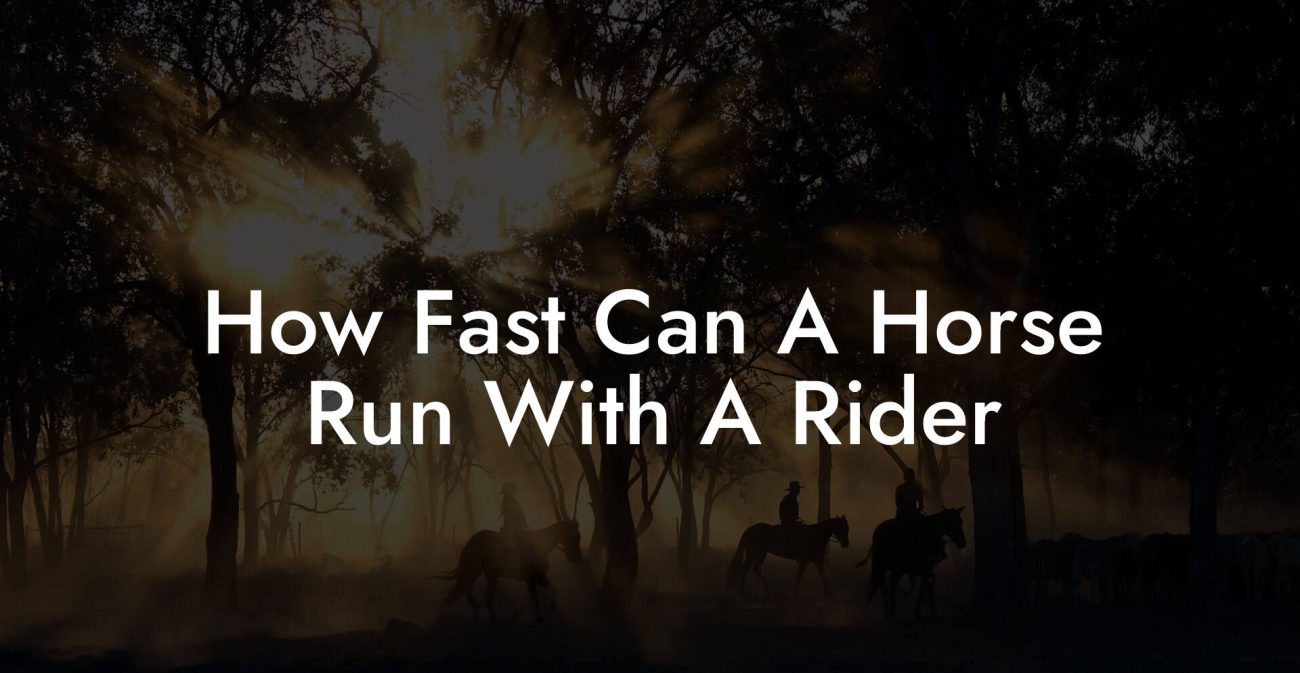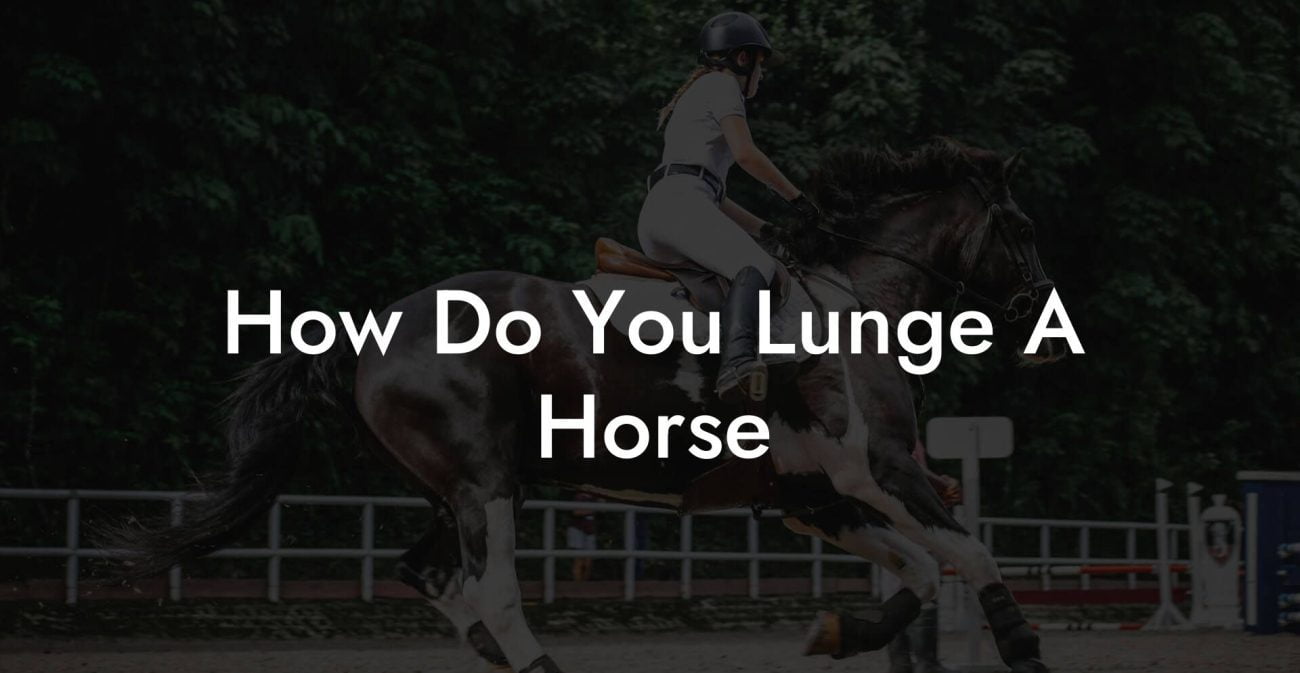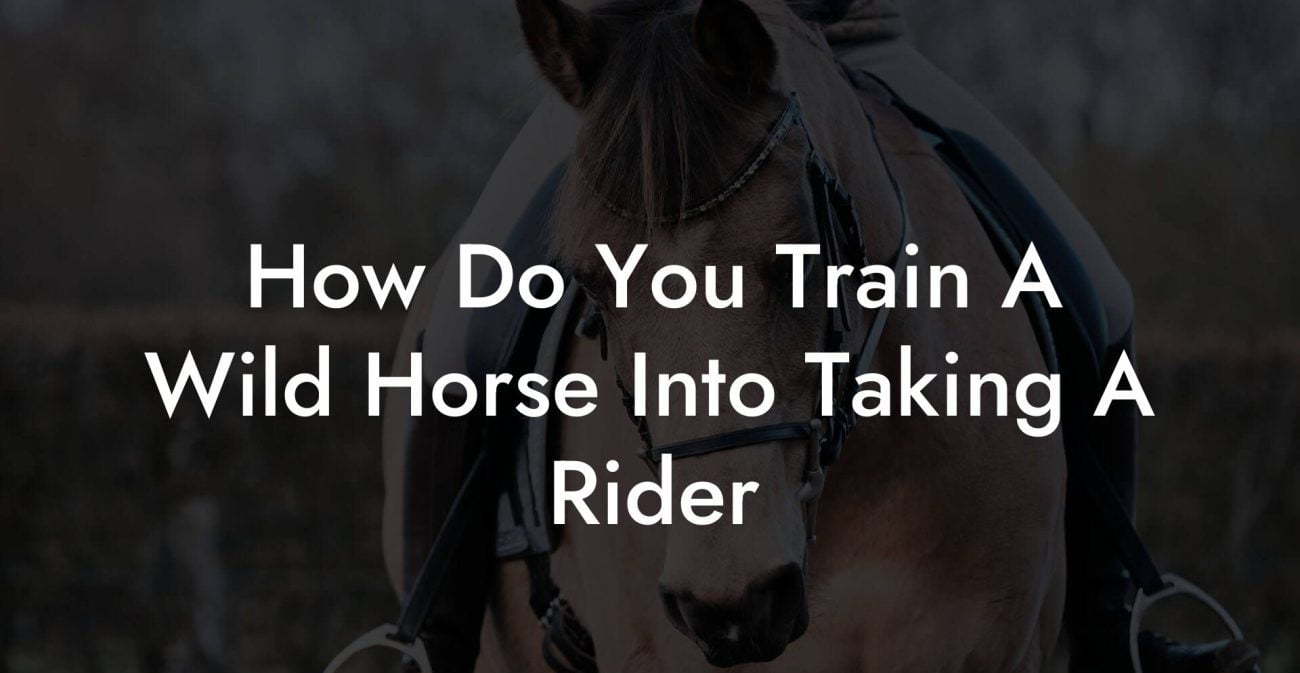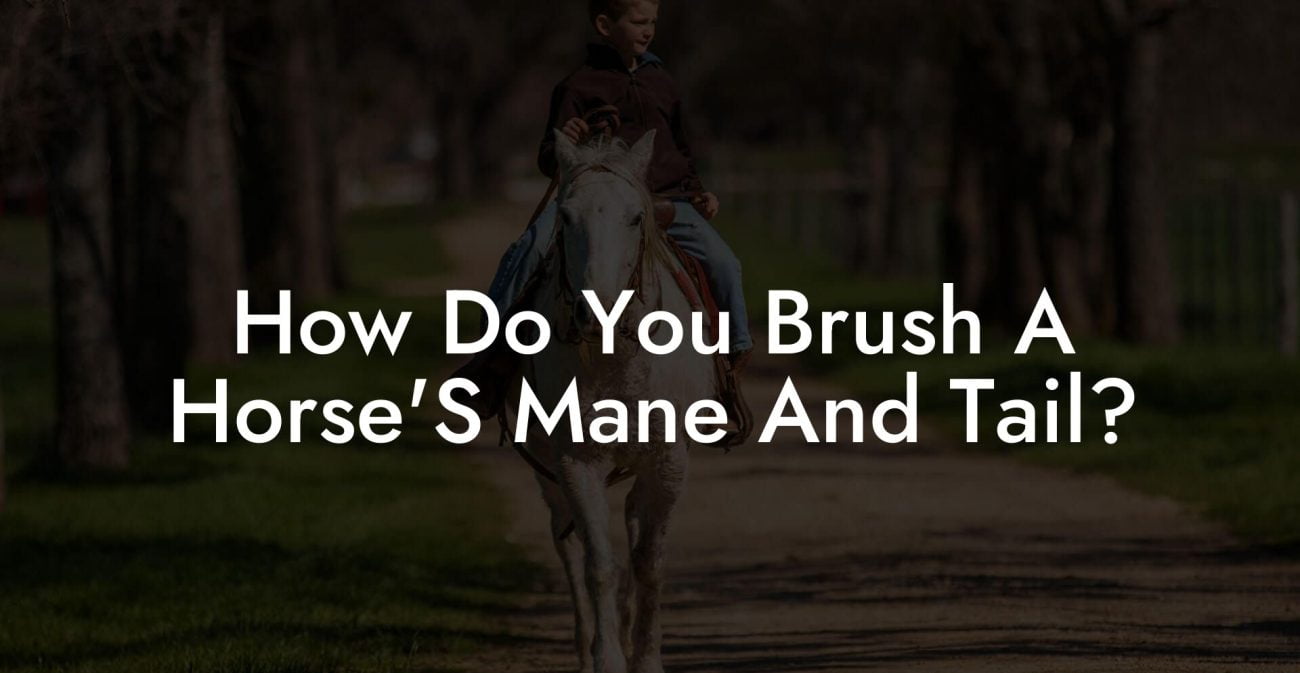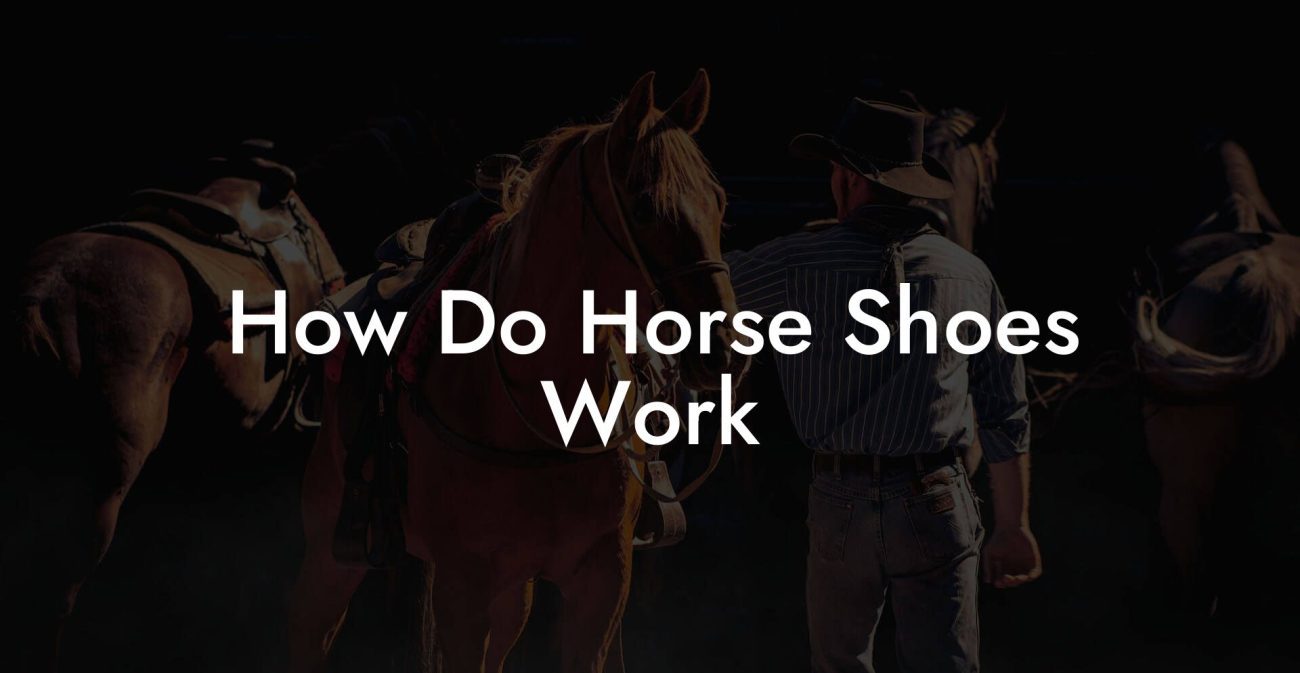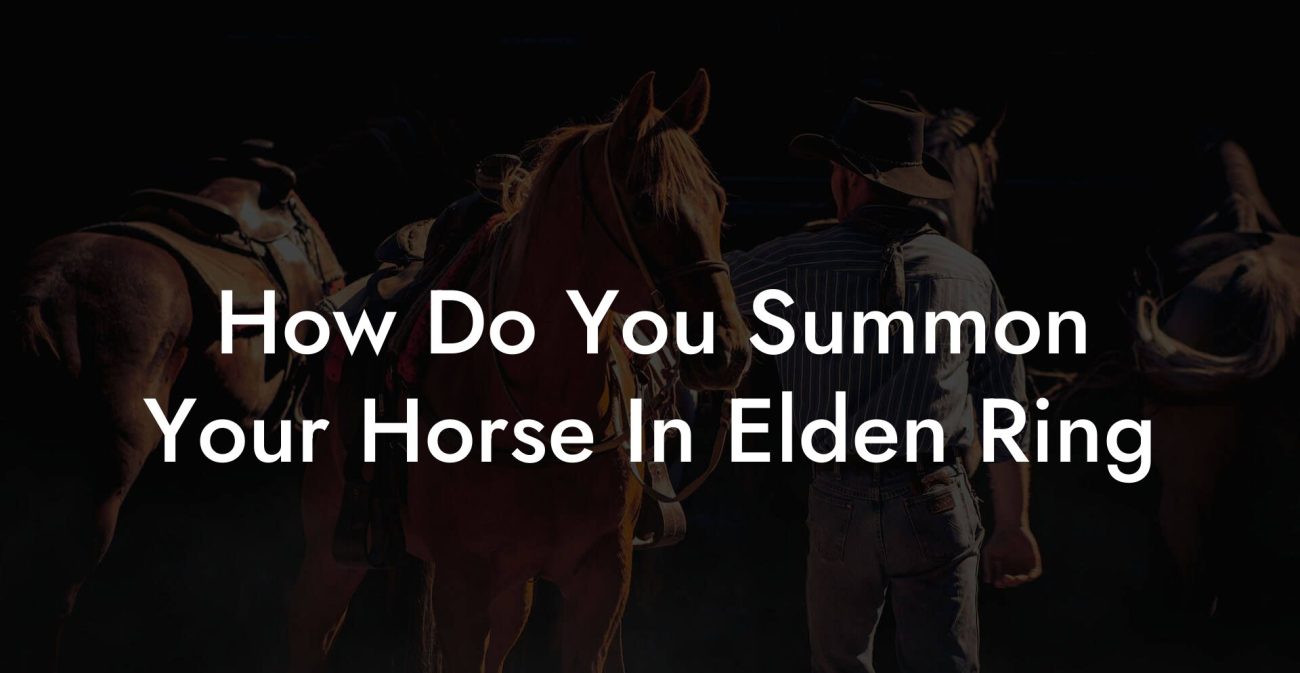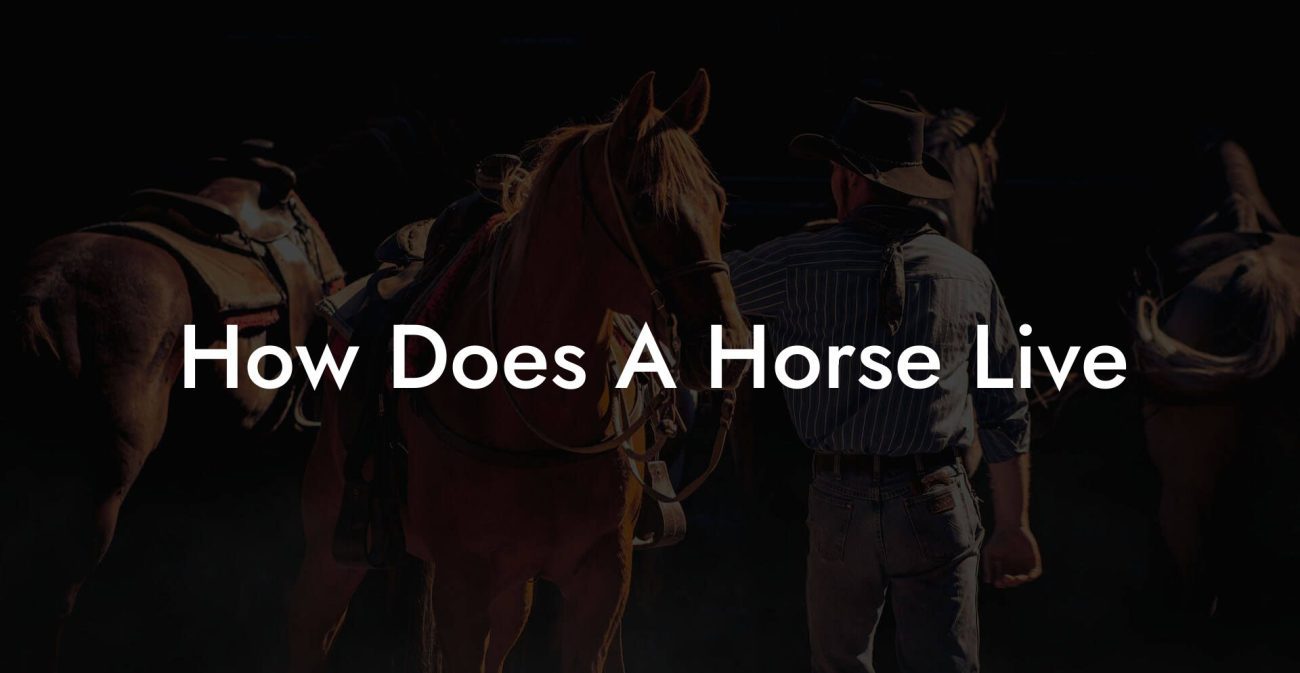There’s nothing quite like the sight of your horse cantering gracefully across a sun-drenched field, its powerful muscles rippling under a sleek coat as it moves with a fluid, measured speed that’s both mesmerizing and utterly awe‐inspiring. Ever wondered, “How fast is a horse canter?” or what factors contribute to that perfect stride? Whether you’re a Gen-Z equestrian enthusiast or a millennial riding aficionado, understanding the canter isn’t just about numbers, it’s about caring for your equine companion, fine-tuning training routines, and embracing the modern science and art behind horsemanship.
Quick Links to Useful Sections
- Understanding the Canter: What Does Speed Really Mean?
- How Fast Is a Horse Canter? Breaking Down the Numbers
- Key Factors Influencing a Horse’s Canter Speed
- The Science Behind the Canter: A Blend of Precision and Power
- Training and Care Tips to Enhance Your Horse’s Canter
- Warm-Up and Cool-Down Routines
- Consistency in Training
- Rider Influence and Communication
- Incorporating Rest and Recovery
- Nutrition and Wellness: Fueling Your Equine Athlete
- Modern Tools and Technologies in Equestrian Performance
- Resources and Community Support: Your Next Steps
- Real-Life Stories: Riders and Their Lightning-Fast Companions
- Amanda’s Journey: From Cautious Trotting to a Confident Canter
- Marcus’ Revival: Bringing Aged Beauty Back to the Arena
- Lena’s Tech-Infused Triumph: Revolutionizing Horse Care in the Digital Age
- Caring for Your Horse: Beyond Speed and Statistics
- Frequently Asked Questions About Horse Canter, Speed, and Care
- Your Roadmap to Happier, Healthier Equine Performance
Understanding the Canter: What Does Speed Really Mean?
When we talk about the canter, we’re referring to a unique gait that sits comfortably between a trot and a gallop. It’s characterized by a three-beat rhythm where one of the footfalls leads with a distinct “downbeat” followed by two lighter beats. Its balanced cadence is not only aesthetically pleasing but also mechanically efficient, permitting the horse to maintain momentum with an elegant level of control.
In equestrian circles, the canter is celebrated for its versatility. Whether you’re trotting around a dressage arena, racing across an open field, or just enjoying a leisure ride, the canter offers a blend of agility, speed, and smoothness. It’s this adaptability that makes the canter a favorite among riders looking to improve performance while ensuring their horse remains comfortable and injury-free.
As you explore the nuances of the canter, keep in mind the balance needed between speed, precision, and care. After all, the well-being of your horse is intrinsically linked to how well you understand and nurture this dynamic gait.
How Fast Is a Horse Canter? Breaking Down the Numbers
At first glance, the question “How fast is a horse canter?” might seem as simple as quoting a number, but there’s plenty more to this inquiry than meets the eye. On average, a horse canter typically clocks in between 10 to 17 miles per hour (16 to 27 kilometers per hour). However, this range can vary dramatically depending on factors such as breed, training, terrain, and even the day-to-day mood of your equine partner.
For instance, a well-conditioned Thoroughbred may find its canter leaning towards the higher end of the spectrum, while a horse bred for a more relaxed, agricultural lifestyle might exhibit a more moderate pace. This variability underscores a critical point: speed isn’t the sole indicator of a horse’s health or performance. Instead, the quality and efficiency of movement, how gracefully and sustainably a horse can sustain that pace, is the true hallmark of a thriving equine athlete.
Also, consider that during competitive events and training sessions, riders often look for a balance between speed and control. A too-fast canter can compromise form, while too slow a pace might not build the necessary endurance. And let’s not forget the role of the rider, your cues, posture, and even emotional energy play a subtle but significant role in influencing your horse’s canter.
Key Factors Influencing a Horse’s Canter Speed
When dissecting the speed and efficiency of a horse’s canter, think of it as a symphony where various components must harmonize. Here are some vital factors:
- Breed and Genetics: Just as not all humans are sprinters or marathoners, horses too have naturally varying capabilities. Some breeds are genetically predisposed to higher top speeds, while others excel in stamina and grace.
- Physical Condition: A regular fitness routine, including strength training, flexibility exercises, and proper warm-ups, ensures that muscles, tendons, and ligaments remain in peak condition.
- Training and Technique: Skillful training techniques, paired with a knowledgeable rider, can make a world of difference. Proper canter training enhances stride efficiency and reduces the risk of injury.
- nutrition and Hydration: Just like athletes need the right fuel, horses require balanced nutrition and ample hydration to support muscle performance and recovery. Precisely formulated feeds and supplements can boost overall performance.
- equipment and Tack: The right saddle, bridles, and even horseshoes contribute subtly to how a horse moves. Ill-fitting gear can restrict motion and cause discomfort, which in turn affects speed.
- Environmental Conditions: Track surface, weather, and even the terrain play a significant role. A well-groomed, dry arena provides the best conditions for a smooth, fast canter.
Each of these factors interacts with one another. By paying attention to the details, from the kind of feed you provide to the quality of your horse’s shoes, you ensure that your equine partner maintains a healthy, sustainable canter.
The Science Behind the Canter: A Blend of Precision and Power
Digging into the biomechanics of the canter reveals a fascinating interplay between physics, physiology, and pure animal instinct. At its core, the canter is all about efficiency in motion. The three-beat gait allows for a momentary suspension when all four hooves are off the ground, a brief, gravity-defying pause that lets the horse measure the distance and recharge its momentum.
This suspension phase is not only a marvel of natural engineering but also a key factor in energy conservation. Instead of expending extra power, the horse uses gravitational forces to propel itself forward. It’s comparable to a well-oiled machine where every movement is finely tuned for optimal performance. Modern research in equine biomechanics uses high-speed cameras and motion sensors to analyze these movements, allowing trainers to fine-tune techniques and prevent injuries.
For the modern rider, technology is not just a buzzword, it’s a vital tool in understanding and enhancing performance. From wearable sensors that track heart rate and stride patterns to mobile apps that analyze your horse’s gait, the marriage of science and sport has never been more exciting. Embracing these advancements can help you pinpoint areas where your horse can improve and offer insights into how changes in training or care might lead to smoother, faster, and more consistent canters.
Training and Care Tips to Enhance Your Horse’s Canter
If you’re passionate about seeing your horse perform at its best, incorporating tailored training and meticulous care routines is key. Whether you’re a seasoned rider or new to the world of equine care, these tips will help you boost your horse’s performance while ensuring its well-being remains front and center.
Warm-Up and Cool-Down Routines
A proper warm-up before riding increases blood flow to the muscles, reducing the risk of strains and injuries. Start with a gentle trot, progress through dynamic stretches, and gradually transition into a controlled canter. After your session, a cool-down involving slower gaits and stretching helps dissipate lactic acid and prevents stiffness.
Consistency in Training
Much like any athletic endeavor, consistency is crucial. Incorporate regular sessions focusing on canter training alongside exercises that build core strength and balance. Variability in routines, such as integrating trotting drills, poles, and circle work, keeps your horse’s muscles engaged and adaptable.
Rider Influence and Communication
A responsive, well-trained horse canter is often a reflection of an attuned rider. Work on refining your cues, both verbal and non-verbal, to foster an intuitive relationship with your horse. Clear, consistent signals help your horse learn the desired pace and remain relaxed, even during high-speed canters.
Incorporating Rest and Recovery
Balancing training with adequate rest is essential. Just as overtraining can lead to injuries in human athletes, horses also need time to recover. Ensure that your horse enjoys rest days, passive exercise, and recovery therapies like massage or controlled turnout to keep both its body and mind in top form.
Here’s a quick checklist to keep you on track:
- Begin with a dynamic warm-up followed by gradual canter work.
- Balance high-intensity training with ample rest and recovery sessions.
- Monitor your horse’s behavior for signs of fatigue or discomfort.
- Incorporate regular turnout and passive exercises to maintain flexibility.
- Utilize modern tech like equine fitness trackers to fine-tune training sessions.
With these practices in place, a harmonious blend of speed, skill, and care keeps your horse’s canter not just fast, but healthy and enduring.
Nutrition and Wellness: Fueling Your Equine Athlete
Think of nutrition as the spark plug that ignites your horse’s performance. A well-balanced diet, rich in vitamins, minerals, and high-quality proteins, is crucial for muscle repair and overall health. For many modern riders, feeding their horses isn’t just about filling a trough, it’s a mindful practice that directly impacts performance.
Key nutritional components include:
- Proteins and Amino Acids: Vital for muscle repair, especially after rigorous training. Look for feeds that contain easily digestible proteins like soybean meal or alfalfa.
- Carbohydrates: These supply the energy necessary for sustained activity. Balancing fiber sources like hay with concentrate feeds keeps energy levels consistent.
- Fats: High-quality oils and fats provide a concentrated energy source, which is especially important during colder months.
- Electrolytes and Minerals: Essential for muscle function and nerve conduction. Salt and specialized mineral mixes can help replenish electrolytes lost during extended training sessions.
- Vitamins: Particularly vitamins A, E, and C act as antioxidants that help reduce inflammation and support recovery.
More than just the feed, hydration plays a pivotal role. Ensure your horse has access to clean, fresh water at all times, especially during and after exercise. Supplementing the diet with natural additives and herbal supplements, under the guidance of a veterinarian, can further enhance your horse’s stamina and overall well-being.
By aligning your horse’s nutrition with its exercise regimen, you create a synergy that fuels faster recovery times, improved performance, and a healthier life overall.
Modern Tools and Technologies in Equestrian Performance
Just as smartwatches and fitness trackers revolutionize human sports, modern technology is transforming equine performance. Today’s riders have access to a suite of digital tools designed to enhance both training and care.
Wearable Technology: Devices that monitor a horse’s heart rate, stride length, and even its GPS location can provide invaluable insights. This data enables you to tailor training sessions, avoid overexertion, and even predict potential injuries before they become serious.
Mobile Apps and Software: With an array of equestrian apps available, managing training schedules, nutritional logs, and veterinary appointments has never been easier. Many of these platforms offer community features, allowing you to connect with like-minded riders, share success stories, and exchange care tips.
Video Analysis: High-speed cameras and mobile video apps allow you to record and analyze your horse’s gait in real time. Reviewing these videos can help you and your trainer identify subtle imbalances or irregularities in your horse’s canter, paving the way for targeted improvements.
Embracing these digital tools can transform your approach to horsemanship. They not only improve performance metrics but also empower you with insights that lead to smarter, more compassionate care.
Resources and Community Support: Your Next Steps
Venturing into the world of equine care and performance is as exciting as it is challenging. Connecting with a community of fellow riders, trainers, and veterinarians can provide the support and guidance needed to elevate your horse care game.
Consider joining online forums, local riding clubs, or social media groups dedicated to equestrian excellence. Many platforms feature discussion boards and resource libraries that cover everything from nutrition and training regimens to innovative technologies and behavioral insights.
Additionally, explore websites and blogs dedicated to horse care, where you can glean tips directly from experts who have spent years mastering the art and science of equine performance. Workshops, webinars, and local clinics also offer hands-on learning experiences that integrate the latest research with time-tested practices.
With a supportive network, you not only enhance your own skills but also contribute to a vibrant community that champions the welfare and excellence of our four-legged friends. Whether you’re troubleshooting a specific issue or simply looking to learn more about improving your horse’s canter, the resources available are both vast and invaluable.
Real-Life Stories: Riders and Their Lightning-Fast Companions
Sometimes, the best proof of concept comes from those who have walked, or cantered, the path before you. Let’s dive into a few inspiring stories that blend passion, perseverance, and the magic of equine partnership.
Amanda’s Journey: From Cautious Trotting to a Confident Canter
Amanda, a young rider and social media influencer in the equestrian world, began her journey with a horse named Storm. Initially timid and unsure, Storm showed promise at a gentle trot but struggled with transitioning into a fluid canter. Determined to help her companion reach its full potential, Amanda integrated modern training techniques with traditional care, leveraging video analysis and wearable tech to monitor progress. Today, Storm’s canter isn’t just faster; it’s a graceful expression of mutual trust and refined technique, inspiring enthusiasts around the globe.
Marcus’ Revival: Bringing Aged Beauty Back to the Arena
Marcus, a seasoned rider with a deep love for vintage horse breeds, had an older mare whose canter had lost its spark over the years. With a comprehensive approach that combined specialized nutritional plans, consistent physical therapy, and innovative training sessions, Marcus brought back the essence of her youthful stride. Not only did the mare regain a lively canter, but their rejuvenated partnership also became a testament to the power of dedicated, informed care.
Lena’s Tech-Infused Triumph: Revolutionizing Horse Care in the Digital Age
Lena, a tech-savvy millennial, merged her love for equestrian sports with modern technology. By incorporating fitness trackers, equine apps, and online training communities, she crafted a personalized care and training regimen for her horse, Ember. The result? A canter that’s both competitively speedy and remarkably sustainable. Lena’s innovative approach not only garnered accolades in local competitions but also encouraged a broader dialogue about balancing technology and traditional horse care.
These stories underscore one resounding truth: a well-cared-for horse is capable of astounding feats. It isn’t merely about hitting a specific number on the speedometer, it’s about nurturing a vibrant, healthy partnership built on trust, knowledge, and continuous learning.
Caring for Your Horse: Beyond Speed and Statistics
While the question “How fast is a horse canter?” might draw your attention to numbers, a truly successful equine care strategy is about so much more. It’s about balancing physical performance with the profound responsibility of maintaining your horse’s overall well-being.
Regular grooming, proper hoof care, routine veterinary check-ups, and mental enrichment are pillars of responsible horsemanship. A cantering horse is a happy, healthy horse, and the secret to achieving that lies in a dedicated, holistic approach to care:
- Grooming and Hygiene: Daily grooming not only improves your horse’s coat and skin health but also deepens the bond between rider and horse.
- Hoof Care: Regular farrier visits ensure that your horse’s hooves are trimmed and maintained, providing the necessary support during high-impact activities like cantering.
- Regular Check-Ups: Keeping up with veterinary appointments is essential for early detection of potential health issues and for monitoring overall performance metrics.
- Mental Enrichment: Horses, like us, benefit from mental stimulation. Incorporate varied exercises, social interaction, and novel challenges to keep their minds and bodies active.
- Environment and Shelter: A well-maintained stable, ample turnout, and an environment that encourages natural behaviors contribute significantly to your horse’s long-term health.
Caring for your horse is a continual journey, a blend of modern technology, evidence-based practices, and old-fashioned tenderness. Embrace the process, and over time, you’ll witness not only a faster canter but a happier, healthier horse that’s brimming with vitality.
Frequently Asked Questions About Horse Canter, Speed, and Care
Below are some of the most common questions we hear from riders seeking to understand more about the canter’s speed, factors influencing it, and best practices for caring for their horse. We’ve also included structured FAQ schema markup to help you find quick answers to your pressing queries.
1. What exactly is a canter, and how is it different from a trot or gallop?
The canter is a three-beat gait that sits between a trot (a two-beat rhythm) and a gallop (a four-beat, high-speed gait). It is characterized by a moment of suspension, allowing the horse to move smoothly and efficiently.
2. How fast is the average horse canter?
Typically, a horse canter averages between 10 to 17 miles per hour (16 to 27 km/h), though this can vary based on breed, training, and individual factors.
3. Can a horse’s canter speed be improved with training?
Yes, dedicated training routines, including proper warm-ups, technique adjustments, and increasing muscle strength, can greatly enhance your horse’s canter speed and overall performance.
4. What nutritional factors should I consider to boost my horse’s performance?
A well-balanced diet rich in proteins, carbohydrates, healthy fats, vitamins, and minerals, along with adequate hydration, is critical. Tailor your horse’s diet to its activity level and consult a veterinarian for specific nutritional advice.
5. How important is regular veterinary care in maintaining a healthy canter?
Regular veterinary check-ups help detect early issues and ensure that your horse’s musculoskeletal and internal systems are in optimal condition, which is crucial for maintaining a smooth, injury-free canter.
6. Are there modern tech tools that can help me monitor my horse’s canter and health?
Absolutely. Devices like wearable trackers, mobile apps, and video analysis tools provide real-time data on your horse’s heart rate, stride, and overall performance, helping you fine-tune training and care routines.
Whether you’re a beginner or an experienced rider, these FAQs cover essential insights that empower you to make informed decisions about training and caring for your horse.
Your Roadmap to Happier, Healthier Equine Performance
At the end of the day, caring for your horse goes far beyond simply answering “How fast is a horse canter?” It’s about building a relationship anchored in mutual respect, understanding, and a commitment to continual learning. The canter is a microcosm of the broader picture of equine health and vitality, a dance of precision, power, and passion that reflects the essence of your horse's spirit.
Embrace the blend of science and art that defines modern equestrian care. Take the time to assess not just the speed, but the quality of performance, invest in regular training, fine-tune nutritional plans, and harness both traditional practices and modern technology to create a well-rounded, dynamic approach to your horse’s well-being.
Your journey into understanding and enhancing the canter is a path marked by little victories, a smoother stride here, a more responsive cue there. Every improvement, however small, adds up to a significant boost in performance, health, and the overall quality of life for your beloved equine partner.
So, take these insights and go forth with confidence. Whether you’re riding on a breezy trail, competing in a spirited arena, or simply reveling in the beauty of your horse’s natural gait, remember that every step in the canter is a celebration of movement, care, and the profound bond you share.
Equip yourself with knowledge, embrace innovative tools, and, most importantly, care deeply for your horse. The result will be a partnership that redefines what it means to move fast and live well, on and off the field.

